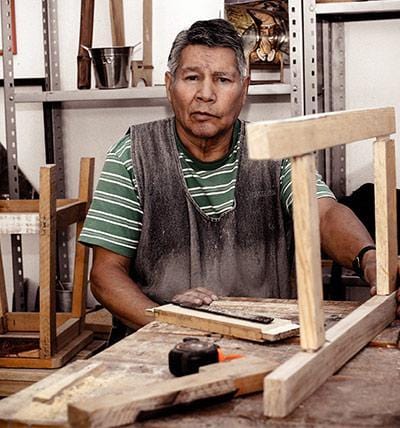It's up to you if you want to buy a wooden toy for your kid, but there are a few things to keep in mind to ensure the toy's safety. Some softwoods are more likely to be hazardous than hardwoods, and this is the first thing you should know. Additionally, you should stay away from untreated wood toys.
Compared to Hardwoods, Softwoods Don't Last as Long
Toys may be made from many different kinds of wood, whether you're shopping for a kid or treating yourself. The longevity of your final item is directly proportional to the quality of the wood used in its construction.
Hardwoods are more robust and long-lasting than softwoods. They're typically more thick, too. They also have a wide range of hues and textures to choose from. Hardwoods are more durable and less likely to splinter, but they can be more challenging to cut.
Hardwoods are commonly utilized for framing and decks. The cost is often higher than that of softwoods. Toys should preferably be made of hardwoods because of their greater stability. Furniture is often made of hardwoods.
There is a significant danger of ingesting hazardous chemicals from wooden toys.
Children's exposure to harmful chemicals is only one of the risks that comes with playing with wooden toys. VOCs, or volatile organic compounds, released during manufacture might be to blame for the contamination. Toys made from wood may potentially contain volatile organic compounds.
Cancer-causing substances, neurotoxins, harmful to reproduction, and endocrine disruptors are all examples of toxic chemicals. Food storage containers may also include some of these substances.
More work is needed to safeguard children from the dangers of poisonous toys, according to a new research that contains an updated list of dangerous compounds in toys. To assess which items represent the most risk, the study incorporates chemical content with material features. It also suggests less risky options.
The research shows that soft plastic toys are more dangerous than their hard counterparts. The amount of time kids spend with toys is also a factor in their exposure. It also implies that toy companies should look towards alternatives to BPA.
Keep Unfinished Wooden Toys in Open Containers
You need a place to put your toys and games whether you have a few or a lot. Playtime is enhanced when toys are stored in an orderly fashion. Both stylish and practical, a storage crate or toy box is a great addition to your kid's bedroom.
A toy box with a lid, hinges, or a magnetic clasp is something to look for. Your child's fingertips will be safe from harm when using them. In the case of toy boxes without lids, accessibility to the front panel is of utmost importance.
Having a large toy box is helpful if you have a lot of toys. You may get them in a number of different designs, from painted crates to rustic ones.
Food-Contact-Safe Linseed Oil
You should think about using an excellent linseed oil whether you're starting a brand-new wooden project or putting the finishing touches on one you've been working on for years. Linseed oil comes in three varieties, each with its own set of benefits.
Linseed oil is a versatile finish that may be used on food-safe wood. It penetrates deeply into the wood's grain and leaves a smooth sheen. It may be used for both food and toys without any worries.
In fact, it is one of the world's oldest coatings. Linseed oil was historically utilized by ancient Egyptians to preserve wooden artifacts. Linseed oil is used in contemporary times as a finishing element in oil-based paints and as an additive in food.
Even if a toy complies with CPSC standards, it may still have phthalates.
Even though most toy companies have eliminated phthalates from their products, CPSC standards for wooden toys allow for their presence. Plastic clothes, glue, and vinyl floors all contain these compounds. Cancer, sterility, and asthma are all associated with them.
Toys must adhere to a laundry list of regulations established by the Consumer Product Safety Commission (CPSC). This includes mandates for product testing and certification for American-made goods. Inadequately designed products are those that don't meet these standards. They are not allowed into the United States and may be subject to recall.
The Consumer Product Safety Commission has suggested prohibiting five different phthalates from use in children's products. However, there were opposition groups that fought the proposed regulation. As a result, on October 18, 2017, the CPSC issued a full ban on phthalates.
Foreign-made toys may contain more dangerous chemicals, but American-made ones are normally safe. Some of these additives are harmful and can have an effect on your immune system, skin, and brain. They have the ability to alter a child's DNA as well.





